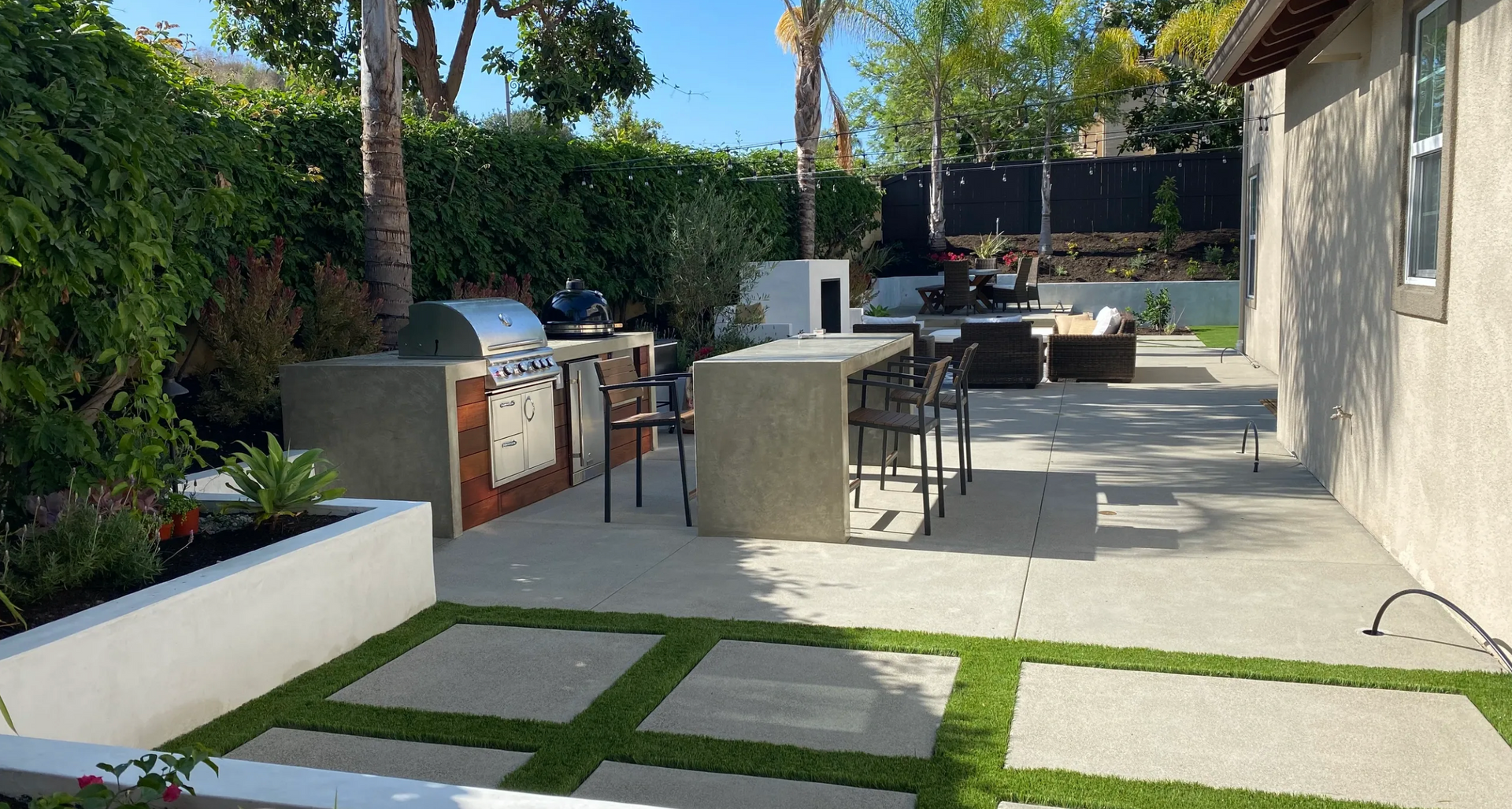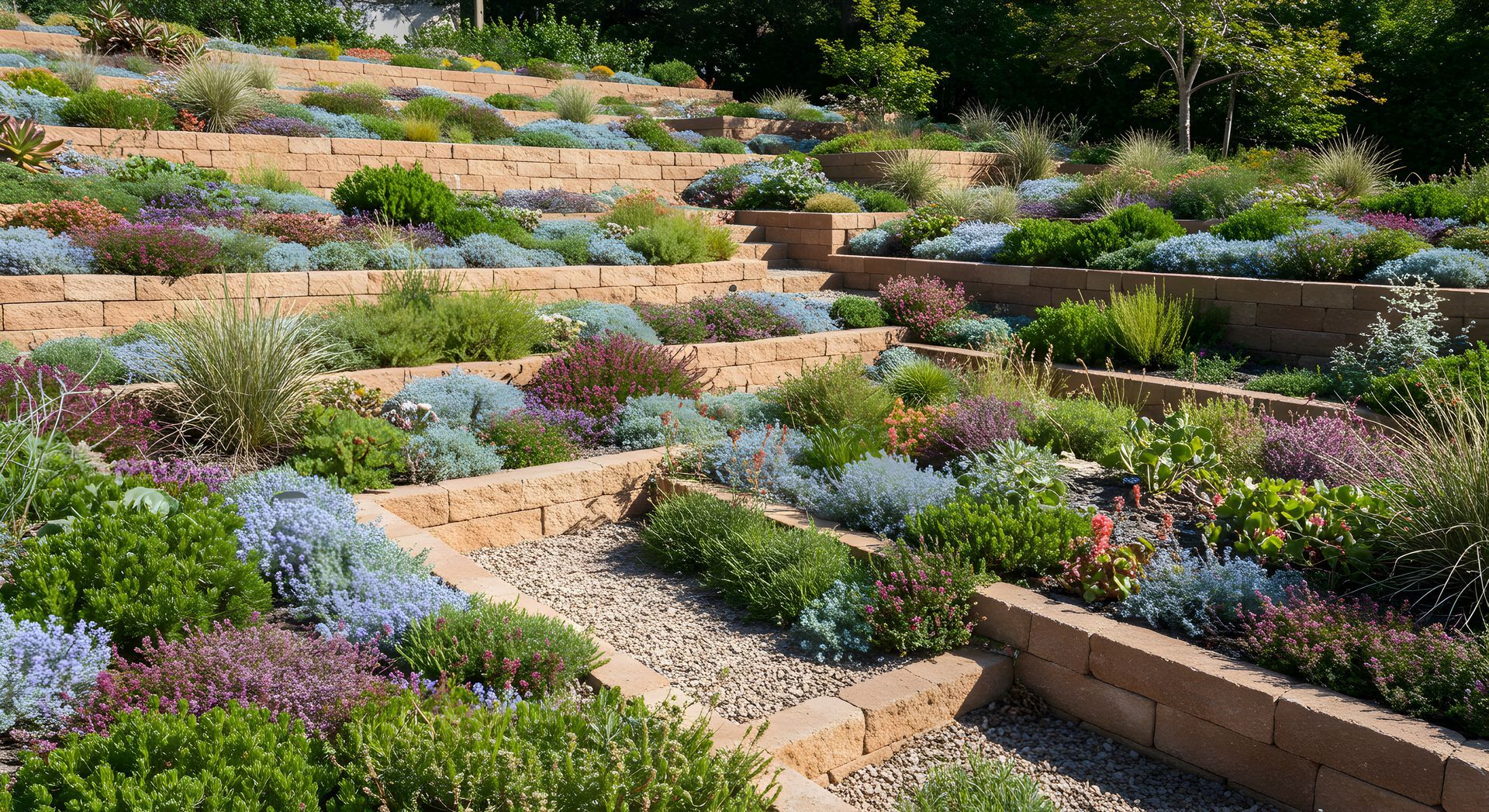June 9, 2025
There’s no denying the visual appeal and luxury that pools and water features bring to a landscape. Whether it’s the tranquil sound of a backyard waterfall, the elegance of a koi pond, or the refreshing escape of a swimming pool, water elements can dramatically elevate your outdoor space. But while these additions offer beauty, relaxation, and even increased property value, they also come with year-round maintenance responsibilities that homeowners should understand before diving in. The Benefits of Adding Pools and Water Features 1. Aesthetic Appeal Water features add a dynamic, eye-catching element to your landscape. Whether it’s a modern reflecting pool or a classic tiered fountain, water brings movement, sound, and serenity that enhance your yard’s visual interest. 2. Property Value Boost A well-designed and well-maintained pool or water feature can increase the value of your home, especially in warm climates like Southern California. For buyers seeking a resort-style backyard, a pool can be a strong selling point. 3. Relaxation and Ambiance The sound of running water has a calming effect, making fountains, streams, and waterfalls popular for stress relief and creating peaceful environments. Pools offer a private oasis for relaxation, exercise, or entertaining. 4. Outdoor Entertainment A pool instantly becomes the centerpiece for gatherings, from kids’ birthday parties to adult evening soirées. Add features like lighting, lounge areas, or built-in spas to enjoy year-round. Types of Water Features to Consider Swimming Pools : From sleek lap pools to custom infinity pools, they provide recreation, exercise, and elegance. Fountains : Low-maintenance options that create ambiance in small or large spaces. Ponds : Naturalistic features that can include aquatic plants or fish like koi. Waterfalls and Streams : Often combined with other features to mimic natural landscapes. Spas and Hot Tubs : Relaxing additions that pair well with pools or function independently. The Maintenance Side of the Splash While the benefits are many, pools and water features do require regular upkeep. Here’s what to keep in mind: 1. Water Quality Management Pools : Require regular chemical balancing (chlorine, pH, alkalinity), skimming, and occasional shock treatments. Ponds and Fountains : May need filtration systems, algae control, and seasonal cleaning. Tip : An automatic chlorinator or saltwater system can simplify pool care. 2. Debris Control Falling leaves, bugs, and dirt can quickly accumulate in any water feature. Skimmers, covers, or nearby low-litter plants can help reduce cleaning time. 3. Pump and Filter Maintenance Mechanical components, such as pumps and filters, require routine inspection and cleaning. Without proper flow, water can become stagnant, allowing it to harbor bacteria and algae. 4. Seasonal Considerations Even in mild climates, seasonal changes can significantly impact maintenance. Winterizing or adjusting usage and chemical levels during cooler months helps protect your investment. 5. Energy and Water Usage Pools and larger features can consume a significant amount of energy and water. Investing in energy-efficient pumps and covers can reduce utility bills and evaporation. Is It Worth It? If you love the idea of transforming your backyard into a private retreat and are prepared to keep up with the maintenance, or hire a professional, then yes, pools and water features are a splashy investment worth considering. They enhance home enjoyment, elevate landscape aesthetics, and can provide a financial return when done correctly. Final Thoughts Adding a pool or water feature is a significant decision that combines lifestyle, design, and long-term maintenance considerations. The payoff? A beautiful, tranquil, and inviting outdoor space that enhances your daily life and your property value. Just be sure to weigh the maintenance requirements so your dream backyard doesn’t turn into a chore. Need help designing a water-wise, low-maintenance water feature that fits your space? Consult with a landscape professional who can help you bring your vision to life while planning for the upkeep it deserves.




